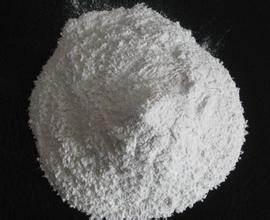Desulfurization Magnesium Oxide Export Quota Policy Is Outdated
Date:2016-08-31 Author: Click:
Experts suggest that if the current export quota for desulfurization of magnesium oxide is still difficult to achieve, the relevant departments should add an export code for desulfurization of magnesium oxide that does not require an export quota to meet the export requirements of magnesium oxide produced by the domestic brine method and dolomite method. In order to distinguish it from the magnesite magnesia magnesia that requires export quota, the Customs can use the power of the industry association to implement electronic ID card tracking and management measures for the magnesia produced by the brine method and the dolomite method.
Tao Lianyin finally said: "It is easy to ask the customs to add an export code. Last year, the silica industry had similar experience. Before this, the five major categories of silica products all share an export code, and the high price is more than 30,000 yuan per ton. The low price of more than 4,000 yuan per ton, which makes high value-added products companies suffer a big loss in export tax rebates. Enterprises and industry associations went to the customs and finance departments for three years, and finally ran down two export codes last year. Now oxidize In order to open the export threshold, the magnesium industry should also make more efforts to respond to the customs and the Ministry of Finance to reflect the reasonable demands of enterprises."
Hu Qingfu, Honorary President of the Magnesium Compound Branch of China Inorganic Salt Industry Association: Magnesium oxide is the most important product of magnesium compounds. At present, the users of this product are scattered in China, and there are not many large users. The annual sales volume of magnesium oxide in China is usually only about 100,000 tons. However, the domestic brine production capacity under construction and commissioning in Qinghai is more than 300,000 tons. How are these capacities digested? Where is the new market? Opening the export market is the main development path. However, the export of magnesium oxide is still subject to export quota management, which is far from being able to adapt to the development needs of the magnesium oxide industry.
The elemental abundance of magnesium in the earth's crust and seawater ranks eighth and third respectively, so the world's magnesium resources are very rich. China's magnesite reserves account for the world's first, as well as abundant seawater, salt lake brine, dolomite, serpentine, brucite, hydromagnesite and other resources. At present, the production of domestic magnesium oxide has been based on the waste brine produced by salt lake potassium and seawater salt by-product, and there is no problem of resource loss. The industry situation has changed, and the customs administration of export quotas for magnesium oxide should also be changed accordingly.
Tao Lianyin, Executive Deputy Secretary General of China Inorganic Salt Industry Association: At present, China's inorganic salt industry has developed rapidly. In particular, enterprises in Qinghai Province rely on the advantages of local salt lake resources to vigorously develop a circular economy, and comprehensively utilize magnesium, boron, lithium and other elements on the basis of the development of potash and potash. The brine magnesia industry has developed rapidly. This year, 300,000 tons of products will be put on the market, forming a scale of special products for flame retardant, desulfurization and pollution control. The domestic magnesium oxide industry shifts to the west, chooses comparative advantage to change the raw material route, and changes from the production of precious magnesite resources to the production of magnesium chloride by using the by-product. This is the outstanding achievement of the industry in the “Twelfth Five-Year Plan”. This achievement is in line with the national policy direction of developing energy-saving emission reduction and circular economy, and the current magnesium oxide export quota management policy should also make changes with the times.
Li Tong, a senior engineer of the Northwest Non-ferrous Geological Exploration Bureau: China has a huge reserve of magnesium resources in salt lakes. After exploration, only the magnesium chloride reserves of 10 major salt lakes in the Qaidam Basin of Qinghai reached 4.213 billion tons. When producing potassium fertilizer that is scarce in China, the company needs 100 cubic meters of brine for every ton of potassium chloride produced, and 8 to 10 tons of magnesium chloride. At the same time, millions of tons of magnesium chloride are discharged back to the salt lake with waste halogen emissions. The formation of “magnesium harm” is unfavorable to the sustainable development of China's potash industry. From 2003 to 2007, we developed high-purity magnesium oxide production technology using waste brine from Chaerhan Salt Lake in Qinghai. We carried out 11 process tests and 10 recovery tests, and achieved satisfactory results. In recent years, the rapid development of domestic production of magnesium oxide from waste brines produced by potash production and waste brine produced by sea salt production is of great significance for China's protection of the ecological environment and the development of circular economy. The state should open its market and export policies. Support.







 wangwang
wangwang
